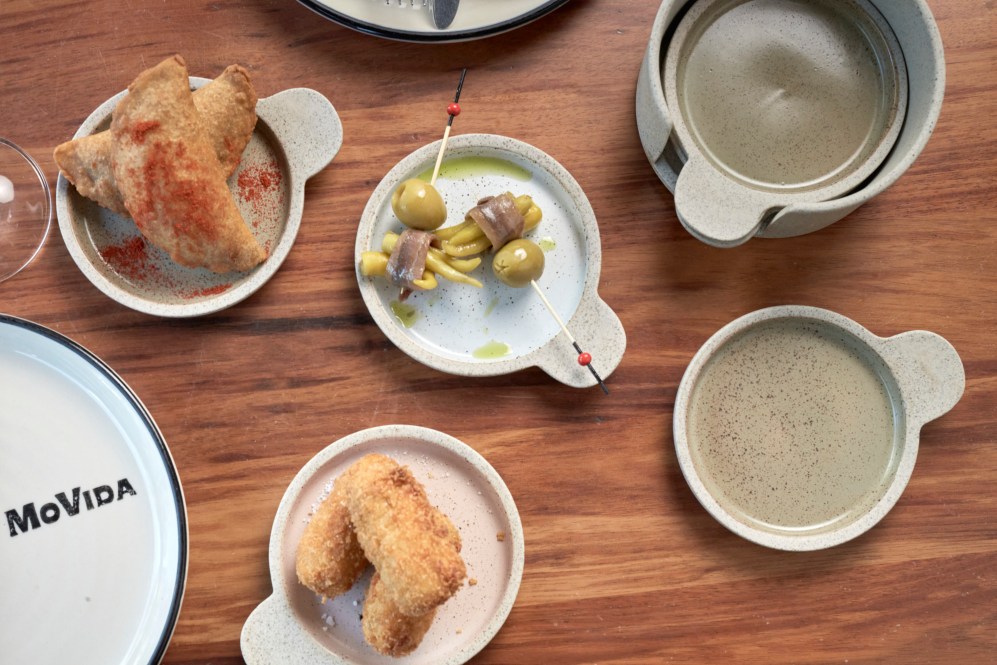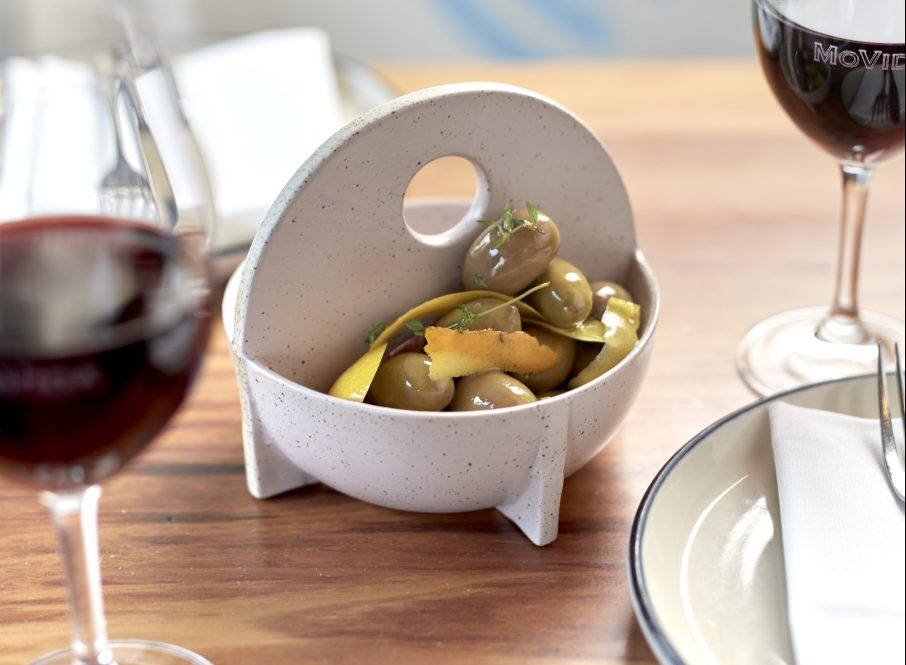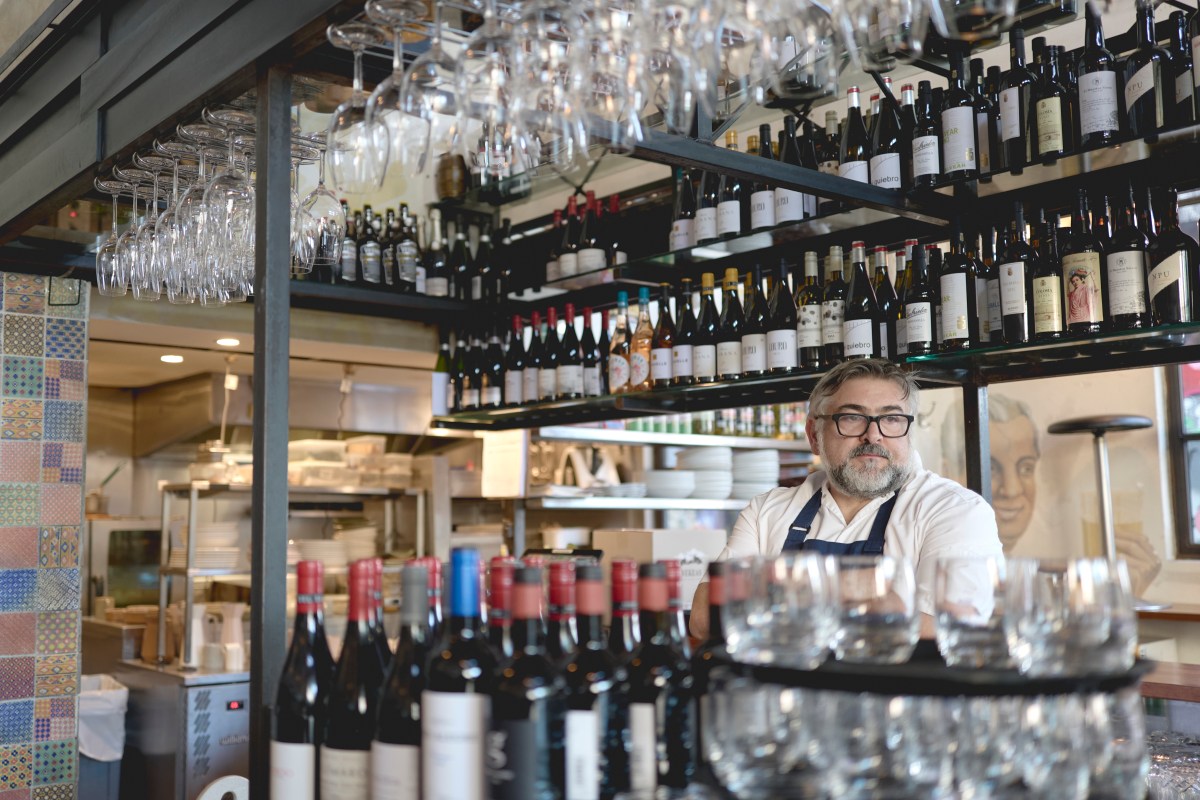Frank Camorra’s laneway tapas bar Movida is a luminary in the culinary landscape, serving up raciones since 2002. The pocket-sized venue has since been joined by Next Door, Tres a Cinco and most recently, Movida Auckland, to name a few. There’s no denying the Movida effect — it was one of the original pioneers of share plates — but Camorra has turned his eye to a new project beyond the kitchen: ceramics.
The chef and restaurateur speaks to Hospitality about his collaboration with Robert Gordon, expanding the Movida brand into the home and the olive bowl everyone needs to know about (and own).
Robert Gordon has been around since 1979. Robert ‘Andy’ Gordon picked up pottery from his mother June Dyson, who was a renowned maker, and went on to grow the family business to become one of the go-to ceramics suppliers for restaurants.
Robert Gordon pieces have long held a place in the Movida kitchen and dining room, with Frank Camorra working with the business for many years to stock his venues with bespoke pieces.
The two forces decided to turn a business dynamic into something more collaborative, which would result in a ceramics collection that would be functional, durable, and of course, uniquely Movida.
“We’ve used their plates for a while and have had a nice relationship,” says Camorra. “They suggested [the collection] well over a year ago and it was a no-brainer for me. I know they focus on creating quality products and we have always been really happy with what they have created for us, so I jumped at the opportunity.”
While Camorra has pursued a career in restaurants, the chef studied architecture for five years and has long had an affinity for Spanish design. Movida’s Spanish roots informed the design brief of the collection, which Camorra filled with references to traditional Southern Spanish tableware as well as historic buildings.
“There’s classic Gaudi architecture and more sculptural forms, and then there are the more vibrant and geometric forms related to Moorish architecture and period Spanish history,” he says. “I spoke to the team about taking the inspiration but making sure it wasn’t cliché — forms that relate back to architecture and creating items that are utilitarian in nature. It was also about products that could go from the oven to the table.”

The Robert Gordon team used Camorra’s brief to determine the types of pieces that
would comprise the collection, many of which were already in use in Melbourne.
“The Robert Gordon guys came out to Movida and saw what we were using, and we spoke about how we could adapt them to make something different,” says Camorra. “We were using a round olive bowl with a central reservoir for pits and stackable tapas plates, which have a little side lift and are really useful because you can stack them up high and chefs can access them quickly.”
The Robert Gordon x Movida olive bowl is as functional as it is aesthetic. The sculptural double-sided piece comes in a mauve colourway and features a disc/ handle (with a cut-out at the top for ease of movement) that divides each side of the bowl for olives and pits.
Bowls of all sizes abound in the collection along with platters, carafes, pouring vessels, serving trays, jugs and mugs — all of which were put to the test by the kitchen team who gave their feedback on the pieces during the trial phase.
“Some of the jugs weren’t pouring correctly — they would dribble — so it was quite the process,” says Camorra. “There was something to work through every month or two; it would have been an eight- to nine-month process in total. A lot of effort, thought and great produce goes into the food, so you want to put it on something that showcases it in the best-possible way.”
You couldn’t get a better environment for testing ceramics than a commercial kitchen, and the Movida collection has been performing well thanks to the high-fired stoneware material it’s made from. “We’re using most of the pieces in the restaurants,” says Camorra. “The first question I asked when I came back from Auckland was, ‘How many pieces have broken?’ and none have so far. It’s such an important part of using the pieces in the restaurant — you want something sturdy and reliable. The chefs like them, too, and we’re using the large flat plates for sliced jamon and whole fish. All the bowls go through the venues as well.”
There’s no doubt the entire collection is visually appealing, but there are a few pieces that are well worth some extra attention. “The handled jugs are beautiful and are a bit different to the typical metal jugs you see everywhere else,” says Camorra. “It’s a classic Southern Spanish form which is pretty iconic and is found in homes and restaurants, but it is made in a palette that’s in keeping with Australian design and colours.

“The shape and inspiration of the carafes comes from La Sagrada Família and they can be used for serving sangria or just water. There are also smaller versions of the carafes which we use for milk. I look at them and say, ‘Yep, that’s Spanish’, straight away.”
The chef also tips the pouring jug as another must-have: “You put your thumb on the side and it pours really nicely,” he says. “I’ve been using it for gazpachos and cold soups. The olive bowl is one of my favourites — just the sheer beauty of it. I think the pieces add something to the dining experience and it looks nice when there are different forms and shapes on the table.”
Camorra is the force behind one of Melbourne’s most recognisable restaurant brands, with the collection allowing the Movida ethos to flow out beyond the dining room and into the home.
“A lot of people may not have heard of us in other states, so collaborating with brands like Robert Gordon and Myer is fantastic,” says Camorra. “When we started doing cookbooks, it changed the perception of Movida — it wasn’t just that little tapas bar down a dodgy laneway — there’s authenticity and knowledge behind it, and I think it’s the same case with this. It should change people’s perceptions of Movida and improve the understanding of what we are.”

